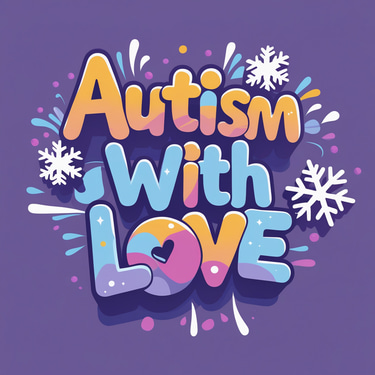Tips for Autism Testing and Beyond
Autism testing tips for concerned parents. Understand the process, state regulations, & how to document behaviors. Find emotional support & practical tools for your child's journey.
AUSTISM SUPPORT
W. Love
3/23/20253 min read


Dear travelers on this unique path,
If you've found yourself here, it's likely you're exploring the possibility of an autism diagnosis for your child or loved one. This journey can feel overwhelming, filled with questions and uncertainties. Take a deep breath. You are not alone. And while the path ahead may seem daunting, it's also filled with opportunities for understanding, growth, and connection.
Let's begin with a medical understanding. Autism Spectrum Disorder (ASD) is a neurodevelopmental condition characterized by persistent deficits in social communication and social interaction, and restricted, repetitive patterns of behavior, interests, or activities. As noted in a recent study published in the Journal of Child Psychology and Psychiatry (Lord et al., 2020), "ASD is a heterogeneous condition, with a wide range of symptom presentations and severity levels, reflecting underlying neurobiological differences." This heterogeneity means that every individual with autism is unique, and their experiences will vary.
The Importance of Research and Advocacy
As you embark on the testing process, it's essential to become your child's strongest advocate. This involves researching state and medical regulations, as well as local school district policies. Each state has its own guidelines for autism diagnosis and services, and these can significantly impact access to support. Understanding these regulations will empower you to navigate the system effectively.
State Regulations: Explore your state's department of health or developmental services websites. Look for information on diagnostic criteria, early intervention programs, and available resources.
Medical Regulations: Familiarize yourself with your insurance provider's policies regarding autism testing and coverage. Contact them directly to understand the process and any required documentation.
School District Regulations: If your child is school-aged, research your local school district's special education policies. Understand their procedures for evaluations, IEP (Individualized Education Program) development, and available support services.
Acknowledging Grief and Finding Acceptance
It's okay to feel a sense of grief when faced with the possibility of an autism diagnosis. You may feel like you're mourning the life you envisioned, the expectations you held dear. This is a natural and valid response. Allow yourself to feel these emotions, and know that you are not alone in experiencing them.
Remember, a diagnosis doesn't change who your child is. It simply provides a framework for understanding their unique needs and strengths. It's a key that unlocks access to resources and support that can help them thrive. Allow yourself time to adjust, to process, and to embrace the beautiful and unique journey ahead.
Practical Tips for the Testing Process
Getting an official diagnosis can take time, but you don’t have to wait to get help. Here are some key tips:
Document Everything: Keep detailed records of your child's behaviors, communication patterns, and developmental milestones. This information will be invaluable during the evaluation process.
Share Videos: If you observe any behaviors of concern, record them. Videos can provide clinicians with a clearer picture of your child's challenges.
Seek Early Intervention: Don't wait for a formal diagnosis to seek support. Many early intervention programs offer services based on suspected developmental delays.
Immediate Tools and Techniques: Ask your doctor, or therapist, for immediate tools and techniques to help with any behavior challenges. They can offer strategies to address sensory sensitivities, communication difficulties, and challenging behaviors while you await the diagnosis.
Connect with Support Groups: Reach out to local or online support groups for parents of children with autism. Connecting with others who understand your experiences can provide invaluable emotional support and practical advice.
Be Patient: The testing process can be lengthy and complex. Be patient with yourself and your child. Remember that every step you take is a step towards understanding and support.
Trust Your Instincts: You know your child best. If you feel something isn't right, don't hesitate to seek a second opinion.
Building a Supportive Community
Remember, you are not alone on this journey. A strong support system can make all the difference. Connect with other parents, therapists, educators, and advocates. Building a community of understanding and support will provide you with the strength and resources you need to navigate the challenges and celebrate the triumphs.
While the path to an autism diagnosis may be filled with uncertainties, it's also a path of discovery and growth. Embrace the journey, celebrate your child's unique strengths, and remember that you are not alone. With patience, understanding, and advocacy, you can create a fulfilling and meaningful life for your child and your family. I hope this provides you with some comfort and guidance. You've got this.
References:
Doda V, Kennedy C, Kaur M. Policies for Individuals With Autism: Gaps, Research, and Recommendations. Cureus. 2024 Jan 8;16(1):e51875. doi: 10.7759/cureus.51875. PMID: 38327931; PMCID: PMC10849157.
Ricchiuti G, Taillieu A, Tuerlinckx E, Prinsen J, Debbaut E, Steyaert J, Boets B, Alaerts K. Oxytocin's social and stress-regulatory effects in children with autism and intellectual disability: a protocol for a randomized placebo-controlled trial. BMC Psychiatry. 2025 Mar 3;25(1):192. doi: 10.1186/s12888-025-06617-6. PMID: 40033311; PMCID: PMC11874388.
Lord, C., Elsabbagh, M., Baird, G., & Veenstra-Vanderweele, J. (2020). Autism spectrum disorder. The Lancet, 392(10146), 508-520.
